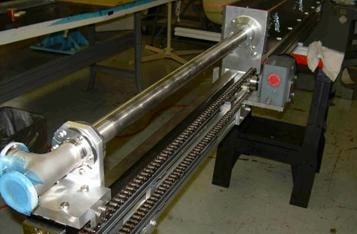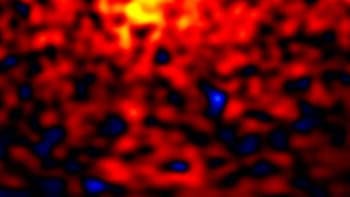
The first results from a series of “shining a light through the wall” experiments have put stringent limits on the properties of the axion — a hypothetical particle that could explain elusive dark matter. The results, which were taken by the BMV experiment in Toulouse, France and the GammeV experiment at Fermilab in the US, call into question the merit of similar experiments in the pipeline.
The only evidence for axions came in 2005, when researchers at the PVLAS experiment in Italy noticed a slight rotation in the polarization of a laser beam passing through a magnetic field. Although the researchers subsequently found that it was in fact an artefact of the apparatus rather than a true axion signal, many other experiments had already begun construction to see if there really could be an axion with the type of parameters suggested by PVLAS — ALPS at the DESY lab in Germany; OSQAR at CERN; LIPSS at the Jefferson Lab in the US; and BMV and GammeV.
These experiments have now just scratched a bit of previously unknown territory
The principle of all these experiments is to shine a laser beam through a magnetic field onto a thick wall that has a photon detector on the other side. Normally none of the beam photons would pass through the wall, but if one of the magnetic-field photons were to combine with another in the beam to produce an axion, the axion would travel through the wall unimpeded. Once through, this axion would be converted back into photons to register a signal on a detector, thus proving the axion’s existence.
The BMV and GammeV experiments have detected no such signal. The BMV team rule out the existence of an axion with PVLAS’s mass and photon-coupling parameters with 99.9% certainty (Phys. Rev. Lett. 99 190403), while the GammeV team increase this certainty to 99.9999% (arXiv:0710.3783v1). The GammeV team also put the strongest constraint on the strength of the axion’s coupling to photons — assuming it has a mass of roughly 1 meV — of less than 5 × 10-7 GeV-1.
‘Redundant’ tests
Carlo Rizzo of the BMV team told physicsworld.com that this makes the other axion experiments, which are yet to publish their first data, largely redundant. “As far as I understand, there are no more special reasons to look for axion-like particles in the range of mass and coupling constant that have already been excluded,” he said.
But this opinion is not shared by Andreas Ringwald at DESY. He points out that DESY’s ALPS experiment and others will be more than an order of magnitude more sensitive to mass, and so might be able to detect particles other than axions. These include new light particles such as those predicted in “supersymmetric” extensions of the current Standard Model of particle physics. With a little modification, he said, the experiments might also be able to detect hypothetical “chameleon” particles. Such particles, which change their mass depending on the density of the matter they inhibit, might explain the accelerated expansion of the universe.
“I think that these [axion] experiments have now just scratched a bit of previously unknown territory,” Ringwald said. “Further experiments such as ALPS or OSQAR have the potential to really dig deep into previously unexplored parameter space.”




